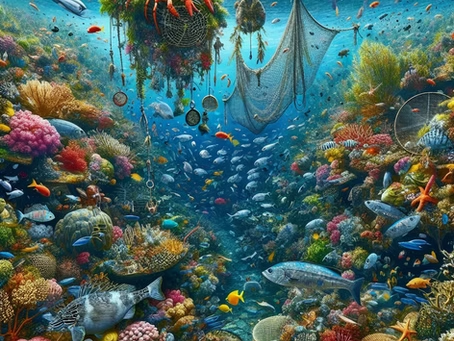The Importance of Sustainable Seafood
Overfishing and unsustainable practices have caused severe declines in many seafood species, threatening ocean health and our food supply. By choosing sustainable seafood, we protect ecosystems, support local communities, and make healthier dietary choices. Sustainable seafood is often fresher, more nutritious, and contains fewer contaminants, while also reducing environmental damage.
Why Sustainable Seafood Matters
Impact on Marine Life
Sustainable seafood helps maintain balanced marine ecosystems. Overfishing disrupts species populations and habitats, while sustainable practices preserve biodiversity and ocean resilience.
Economic Benefits
Supporting sustainable fisheries boosts local economies and ensures long-term stability for coastal communities that rely on fishing for their livelihoods.
Health Advantages
Responsibly sourced seafood is often fresher, with fewer contaminants, and rich in omega-3 fatty acids that benefit heart and brain health.
Understanding Overfishing
Consequences for Ocean Health
Over 90% of wild fish populations are fully exploited or overfished. This imbalance risks ecosystem collapse and damages marine habitats through harmful practices like trawling.
Species at Risk
More than 1,000 fish species face extinction threats. Choosing sustainably farmed or responsibly caught species allows wild populations to recover.
Global Fishing Practices
While some regions enforce strong regulations, many lack oversight. Issues such as bycatch, where non-target species are captured, remain a global challenge.
How to Identify Sustainable Seafood
- Look for certifications such as MSC, ASC, or BAP.
- Consult regional seafood guides for sustainable options.
- Ask your fishmonger key questions:
- Where was this seafood sourced?
- Is it wild-caught or farmed?
- What methods were used to catch or farm it?
Popular Sustainable Seafood Choices
- Wild-Caught Alaskan Salmon: Nutrient-rich, responsibly harvested, and well-managed.
- Farmed Oysters: Eco-friendly, water-filtering shellfish with low carbon impact.
- Pacific Halibut: Strictly regulated to prevent overfishing and maintain healthy stocks.
Supporting Local Fisheries
Community Benefits
Buying locally harvested seafood supports fishing families and preserves traditional practices, while reducing food miles.
Case Studies
- Maine lobster fisheries thriving through sustainable harvests.
- California communities building economies around farmed oysters.
- Alaska setting global standards for sustainable salmon fishing.
Environmental Impacts of Unsustainable Fishing
- Habitat destruction: Trawling and harmful methods damage coral reefs and seafloor ecosystems.
- Bycatch: Accidental capture of turtles, dolphins, and seabirds destabilizes ecosystems.
- Pollution: Fishing gear waste and spills degrade water quality and harm marine life.
The Role of Aquaculture
Modern aquaculture can provide sustainable seafood when managed responsibly. Eco-friendly farming reduces waste, limits disease risks, and supplies reliable protein sources. Examples like oysters and responsibly farmed salmon demonstrate aquaculture’s potential.
Consumer Trends in Sustainable Seafood
Demand for sustainable seafood has more than doubled since 2010. Seventy-one percent of global consumers now prioritize sustainability, driving billions in certified seafood sales and reshaping markets.
Tips for Making Sustainable Choices
- Choose seafood that is in season and locally available.
- Avoid endangered or overfished species using trusted seafood guides.
- Reduce waste by buying only what you need and using all parts of the fish.
The Connection Between Seafood and Climate Change
Carbon Footprint of Fishing
Seafood generally has a lower carbon footprint than land-based proteins. Wild-caught seafood uses little land or freshwater, reducing strain on ecosystems.
Climate-Resilient Species
Farmed shellfish like oysters are sustainable, nutritious, and resilient to climate change, making them smart consumer choices.
Cultural Importance of Sustainable Seafood
Traditional Practices
Sustainable methods preserve fishing traditions passed through generations, ensuring marine resources endure.
Culinary Heritage
From sushi in Japan to paella in Spain, sustainable seafood allows cultures to preserve their iconic dishes responsibly.
Conclusion
Choosing sustainable seafood protects oceans, supports communities, and improves health. Every purchase is a chance to safeguard marine ecosystems and ensure future generations can enjoy seafood traditions worldwide.

